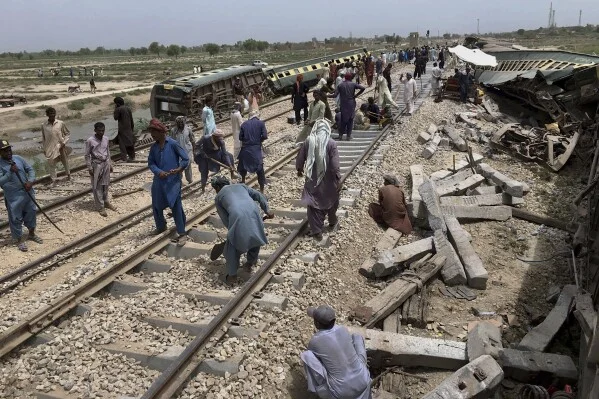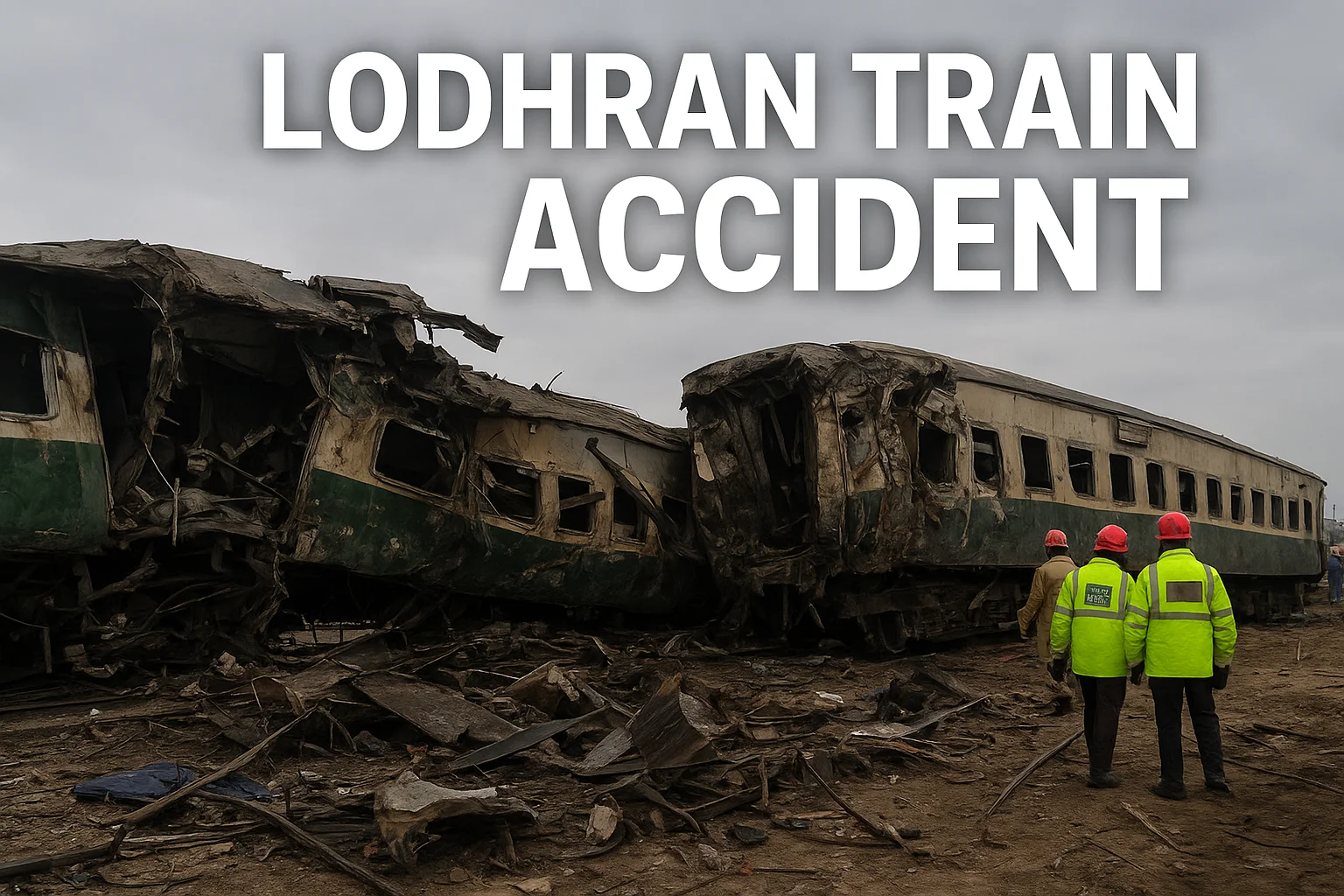A tragic rail mishap in Punjab caused many deaths and left several passengers with serious injuries. Families lost loved ones, while survivors faced both physical pain and emotional trauma. This heartbreaking event shows the urgent need for safer tracks, strict checks, and better systems.
This article explains what happened, how rescue teams responded, and what lessons can be learned to avoid such tragedies in the future.
Introduction to the Lodhran Train Accident
The Lodhran train accident was a tragic railway incident that caused loss of lives, injuries, and sorrow for many families. It raised serious concerns about passenger safety and railway management.
Understanding what happened, why it happened, and how authorities responded is important to prevent such events in the future.
Timeline and Location of the Tragedy
The train accident took place near Lodhran district in Punjab, Pakistan. It happened in the early morning hours when the train collided, leading to serious damage and casualties. The exact timeline of events helps explain how quickly rescue teams reached the spot and how authorities managed the emergency
Casualties and Human Toll
The train accident left behind deep pain for many families. Several people lost their lives, while many others suffered injuries ranging from minor to serious. Survivors faced not only physical wounds but also emotional trauma. Rescue teams worked hard to save lives and give medical help, but the human toll was heavy.
This tragedy shows how one moment can change countless lives, reminding us of the urgent need for strict safety and better railway management
Also Read: 9th Class Result 2025-Check Online Result!
Eyewitness Accounts and Survivor Stories
Eyewitness accounts and survivor stories reveal the true impact of the tragedy. Passengers described the sudden noise, chaos, and fear as the train collided. Survivors shared how they struggled to escape, helped others, and waited for rescue teams.
These stories highlight courage, pain, and the unforgettable moments faced by ordinary people. Listening to these voices not only shows the human side of the accident but also reminds us of the importance of safety and quick response during such emergencies
Primary Causes and Role of Railway Authorities
The primary causes of the tragedy were linked to technical faults, human error, and lack of proper safety checks. Poor track conditions and weak monitoring also played a part. Railway authorities have a major role in preventing such accidents by improving signals, training staff, and ensuring timely maintenance of trains and tracks.
Their quick response during emergencies is equally important, as it reduces loss of life and helps victims receive medical care faster. Strong accountability and better planning are needed to protect passengers and avoid similar incidents in the future.
Also Read: Flood in Swat 2025: Support Swat 2025!

Train accidents have been a recurring issue in Pakistan for many decades. From major collisions to derailments, thousands of lives have been lost due to weak infrastructure, poor maintenance, and limited safety measures. Some of the deadliest incidents happened in Sindh and Punjab, where overcrowded trains and outdated systems increased risks.
This history shows a clear pattern: without strong reforms, accidents continue to repeat. Understanding the past is important because it highlights mistakes, reveals gaps in railway management, and helps in creating safer travel for future generations.
Government Response and Public Reaction
After the tragedy, the government promised a full investigation, relief for victims, and steps to improve railway safety. Rescue teams and officials reached the site quickly to provide medical aid and support. However, the public reaction was filled with anger and grief.
Many people demanded accountability, better infrastructure, and stronger safety measures to prevent such incidents in the future. This mix of official action and public pressure shows how deeply the accident affected society and how urgently reforms are needed.
Impact on Local Communities and Mental Health
The tragedy deeply affected local communities, leaving families in grief and neighbors in shock. Many people lost loved ones, while others struggled with fear and trauma after witnessing the accident. Survivors often faced stress, sleep problems, and long-term emotional pain. Communities also suffered economic losses as daily life and work were disrupted.
This shows that such incidents are not only about physical injuries but also about mental health, where counseling, social support, and community care are needed to help people heal and move forward.
Railway Safety Protocols, Infrastructure Challenges, and Global Comparisons
Railway safety depends on strong rules, modern systems, and regular checks. In Pakistan, outdated tracks, poor maintenance, and weak signals remain major challenges. These gaps often lead to accidents and delays. By contrast, many countries have reduced such risks through advanced technology, strict safety laws, and better staff training.
Comparing global practices with local conditions shows that Pakistan needs urgent reforms. Investment in modern infrastructure, digital monitoring, and international-level safety protocols can protect passengers, reduce accidents, and build trust in the railway system
Conclusion
The tragedy showed clear gaps in railway safety that cannot be ignored. Future reforms must focus on stronger management, modern technology, and regular safety checks. Prevention requires strict monitoring of signals, staff training, and quick-response systems to save lives during emergencies. Public awareness campaigns and international-level safety standards can also help reduce risks. In conclusion, the real solution lies in long-term planning, accountability, and honest efforts from authorities. If these steps are taken seriously, railway travel can become safer and people can regain trust in the system.




Join The Discussion